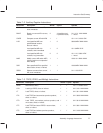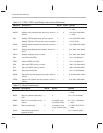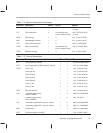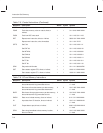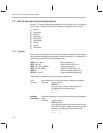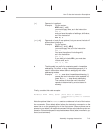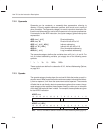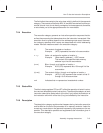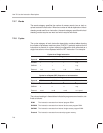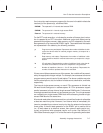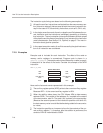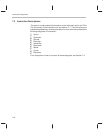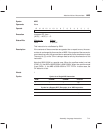
How To Use the Instruction Descriptions
7-15
Assembly Language Instructions
The field called dma contains the value
dma
, which is defined in the operands
category. The contents of the fields ARU, N, and NAR are derived from the op-
erands
ind
and
n
but do not directly correspond to those operands; therefore,
a note directs you to the appropriate section for more details.
7.2.4 Execution
The execution category presents an instruction operation sequence that de-
scribes the processing that takes place when the instruction is executed. If the
execution event or events depend on the addressing mode used, the execu-
tion category specifies which events are associated with which addressing
modes. Here are notations used in the execution category:
(r) The content of register or location r.
Example:
(ACC) represents the value in the accumulator.
x → y Value x is assigned to register or location y.
Example:
(data-memory address) → ACC means:
The content of the specified data-memory
address is put into the accumulator.
r(n:m) Bits n through m of register or location r.
Example:
ACC(15:0) represents bits 15 through 0 of the
accumulator.
(r(n:m)) The content of bits n through m of register or location r.
Example:
(ACC(31:16)) represents the content of bits 31
through 16 of the accumulator.
nnh Indicates that nn represents a hexadecimal number.
7.2.5 Status Bits
The bits in status registers ST0 and ST1 affect the operation of certain instruc-
tions and are affected by certain instructions. The status bits category of each
instruction description states which of the bits (if any) affect the execution of
the instruction and which of the bits (if any) are affected by the instruction.
7.2.6 Description
The description category explains what happens during instruction execution
and its effect on the rest of the processor or on memory contents. It also dis-
cusses any constraints on the operands imposed by the processor or the as-
sembler. This description parallels and supplements the information given in
the execution category.



